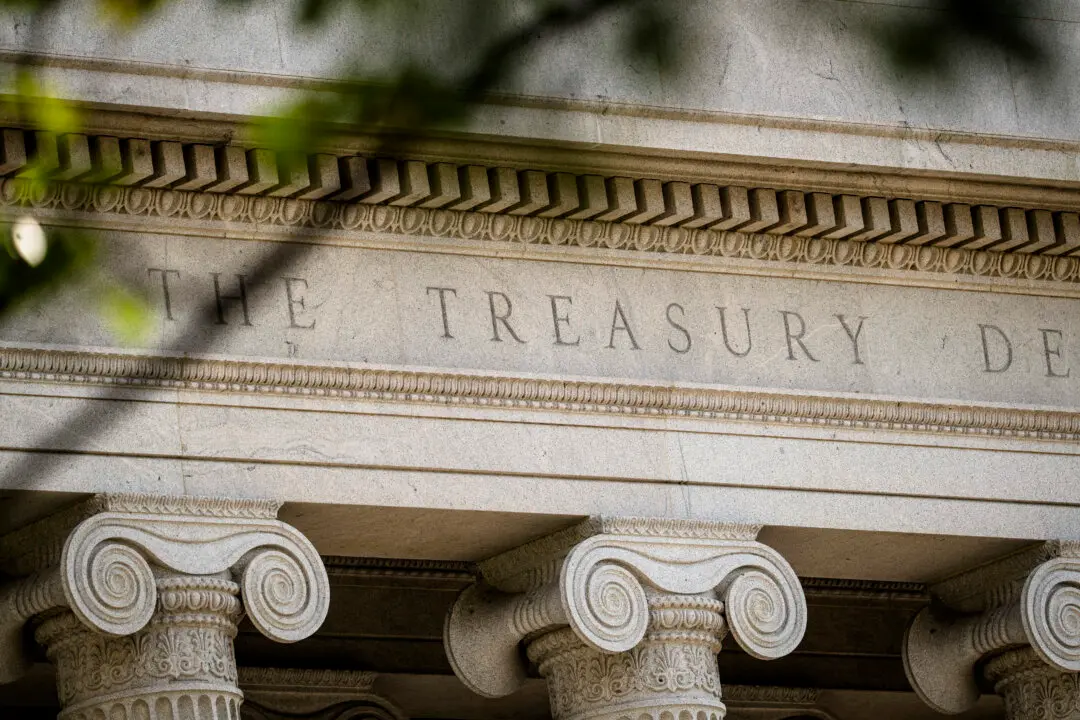Commentary
What exactly is a bond? We know it’s an investment, just like a stock or a piece of real estate. A stock is literally an ownership share of a company. Real estate is a tangible asset that includes land or a physical area where we can live, work, purchase goods, or engage in a number of other activities.
However, bonds are different in a sense. They are a promise to pay back a lender for money advanced in the present, with a series of future cash flows. Some bonds, such as mortgages and secured debt, may have collateral conditions attached. For instance, if a homeowner cannot fulfill monthly obligations, they may forfeit their home.
In the case of government bonds, the lender—or bondholder—relies on the issuer’s promise and its ability to meet those obligations using tax revenues.
The etymology of the term “bond” helps shed light on its meaning. It originates from the verb “to bind.” A bond is an agreement that binds the borrower to repay a lender a specific amount of money. The term was in use by at least the 14th century.
However, bonds and lending around the world existed long before the Renaissance. The earliest verifiable use of bond-like instruments dates back to Mesopotamia in about 2400 B.C., as transferable obligations to repay lenders in grain. It’s no coincidence that the Mesopotamians also developed the precursor to modern accounting—there had to be a way to record and track obligations.
Lending was a financial innovation that revolutionized the world and enabled economic progress. It allowed for the pooling of capital for projects and, all too frequently, wars. The Republic of Venice issued loans called prestiti in 1172 to fund its war against the Byzantine Empire. The prestiti are believed to be the first government bonds.
In 1622, the Dutch East India Co. issued the first corporate bond to the public. The Dutch East India Co. even had its own navy and army—something present-day tech moguls can only dream of.
Returning to our original question: A bond is a type of fixed-income investment, conventionally with a term longer than one year. The lender, known as the bondholder, gives the borrower—or bond issuer—an amount of money up front, and, in return, receives a series of cash flows. Usually, this includes a biannual payment called the coupon and the full return of principal at a pre-agreed maturity date.
For example, an investor might buy a U.S. Treasury bond maturing 10 years from its issuance date on Jan. 1, 2025, for $1,000 at an interest rate of 4 percent. The U.S. Treasury would then be required to pay the bondholder $20 every July 1 and Jan. 1, from July 1, 2025, until Jan. 1, 2035, when it will also repay the $1,000 principal.
This simplified explanation helps us understand the risk–return dynamics and why bonds benefit both sides of the transaction. The bondholder earns a return on their savings and defers present consumption for future consumption. The issuer obtains funds that it does not currently have to fulfill obligations. The interest rate is the agreed-upon “price” of the funds. Hence, the concept of the “time value of money” is important.
Obviously, the issuer’s ability to repay its obligations—its creditworthiness—is critical. The more creditworthy the issuer, the lower the interest rate. This is why high-yield corporate and emerging market bonds trade at higher rates. A rational bondholder would not take on increased risk of default without compensation. Liquidity is also a consideration.
While interest rates change, bond payments do not. If rates increase before maturity, the bond’s market price must decrease. Otherwise, there would be no buyers. For instance, if the Treasury issues a new 10-year bond at 5 percent, no investor would buy an older one yielding 4 percent unless its price falls enough to yield the same 5 percent. The reverse is also true. The longer the term to maturity, the more sensitive a bond is to interest rate changes.
We may know with certainty what the coupon and principal payments will be, but we don’t know what those cash flows will be worth in the future. The further into the future the payments, the less certain we are about their real purchasing power. Inflation is the enemy of the bondholder—and the long-term friend of the issuer. All else equal, a government would prefer to repay its debts in deflated dollars if there were no market-enforced discipline.
We’ve just lived through a brutal example of this. In 2020, 10-year bonds reached unprecedented lows of between 0.5 percent and 1 percent. From May 2020 to now, the U.S. consumer price index has increased from 255.8 to 324.4—a rise of 27 percent. A $20 coupon payment from just more than five years ago is now worth less than $16 in real terms.
The bond market has endured a punishing bear market. Despite massive budget deficits, the U.S. federal debt-to-GDP (gross domestic product) ratio peaked at 132.7 percent in the second quarter of 2020 and fell to 115.6 percent by the end of 2022—not because of fiscal discipline but because of dollar devaluation. Interest rates and their relationship to future inflation determine the real returns for bondholders.
The views and opinions expressed are those of the authors. They are meant for general informational purposes only and should not be construed or interpreted as a recommendation or solicitation. The Epoch Times does not provide investment, tax, legal, financial planning, estate planning, or any other personal finance advice. The Epoch Times holds no liability for the accuracy or timeliness of the information provided.





